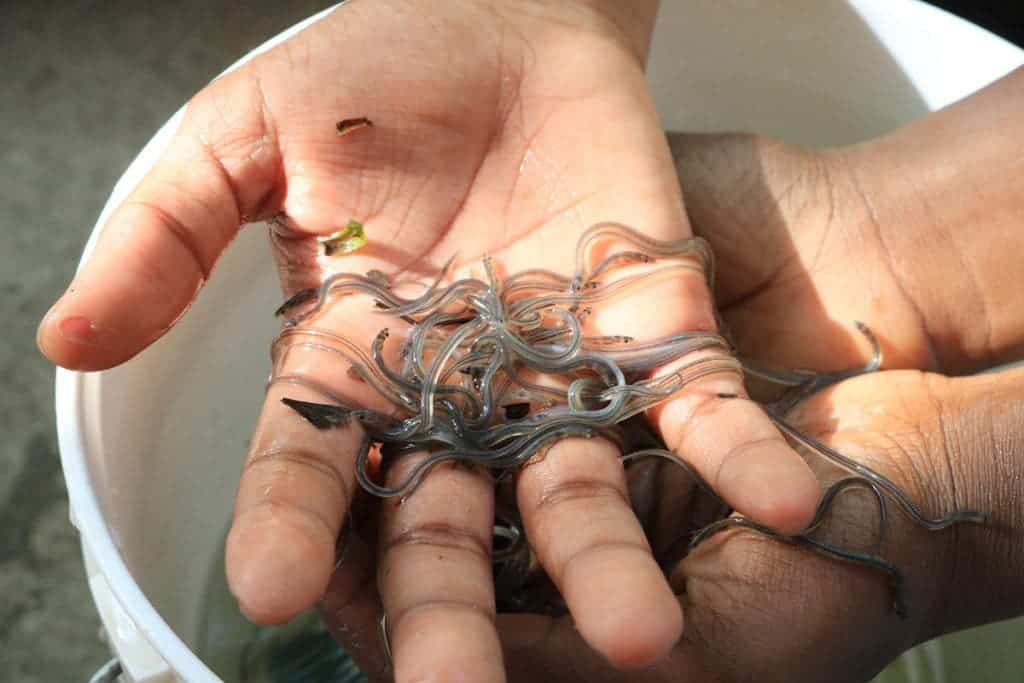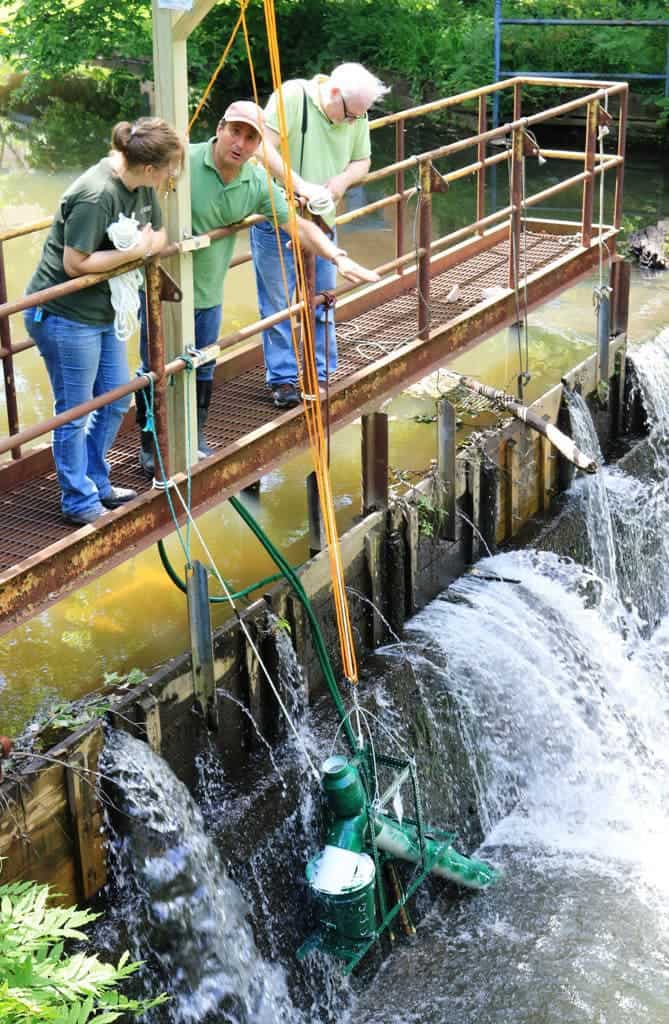Many fish migrate over long distances to feed or breed. Unfortunately, they encounter lots of obstacles that can stop them in their tracks, such as dams, which they cannot cross. Ladders and other devices have been built to help them. Now, for those eels that are too lazy to take the stairs, there is an elevator. Cleverly called “the eelevator”, this contraption can help eels get over a dam and continue their migration.
An important part of the ecosystem
Eels are catadromous, which means that they spend their adult lives in freshwater and migrate to the oceans to breed. Their young then migrate to freshwater to live. American eels are born in the Sargasso Sea and the young eels head northward with the help of the Gulf streams. At this stage in life, the eels are often called “glass eels” because they are transparent. As they get older and migrate further inland they become green and brown and can grow 1.2 meters (4 feet) longer or more.

In a press release, Chris Bowser, an extension support specialist for Cornell’s New York State Water Resources Institute (WRI) in the College of Agriculture and Life Sciences said:
“Eels live in virtually every aquatic habitat, from mountain streams and farm ponds to city creeks, coastal estuaries and the vast ocean. We talk about the connectedness of these water systems; eels are that connection.”
Eels live for a long time, 30 years, and in that time span, they encounter many different habitats and organisms. When they don’t survive because they are unable to migrate then the whole ecosystem would be affected. Already, their populations have been reduced because of these artificial barriers.

Meet the “eelevator”
Now, in an effort to help the eels on their journey, an elevation has been installed in Sparkill Creek in Rockland County to lift the eels past the dam there. The whole initiative started because of concerned locals from the town of Piermont. They contacted Cornell staff at the New York State Water Resources Institute and Hudson River National Estuarine Research Reserve about how to help eels make it past the dam from a nearby pond. It’s a great initiative by citizen scientists who got some help from scientists to make a difference in their neighbourhood.
So here’s how the “eelevator” works: migrating eels climb up a ramp covered with old netting and is always kept wet by hoses. They enter a bucket of circulating water. Twice a week, trained volunteers check the bucket. If there are eels inside, their sizes are recorded. At this stage the eels are usually between 8 and 15 cm (3 and 6 inches long) — they are called elvers at this stage. Then the device is lifted and the eels are released above the dam so that they can continue on their merry way. Since it has been successful so far, “eelevators” will likely be installed at other locations as well.






